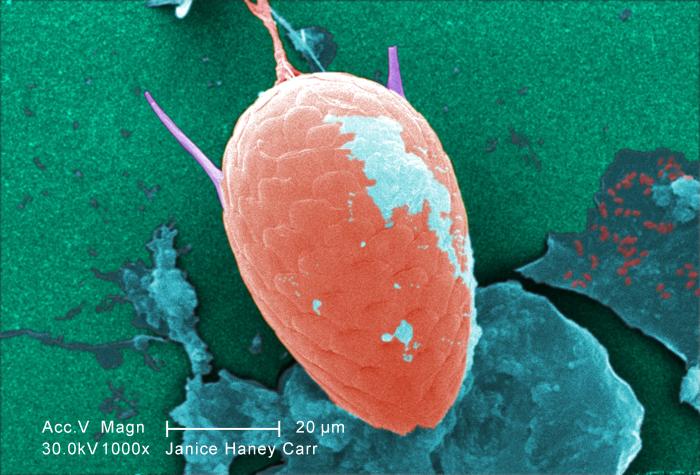
Water Treatment 101: Understanding Giardia
MSR Team Courtesy of CDC
Courtesy of CDC
If you find the published information about Giardia confusing and inconsistent, it’s because the information is a reflection of the parasite itself. Giardia is a multifaceted protozoan that affects individuals differently. It can be prevalent in one small corner of a lake, and practically absent in other parts of the same body of water. In the context of backcountry water, cases of Giardia are rarely diagnosed or reported and there haven’t been enough scientific studies to understand the risks to backcountry travelers. To further complicate the matter, the symptoms of Giardia are difficult to distinguish from those of cryptosporidium, another parasite.
At MSR, we believe the likelihood of contracting Giardia from backcountry water sources in North American wilderness areas is not especially high. A number of experienced outdoor professionals drink untreated water regularly without experiencing symptoms. We still feel Giardia is a real concern to backcountry travelers, and one worth avoiding. MSR suggests you filter or purify all backcountry water to eliminate the possibility of contracting Giardia from a water source. The decision to filter or purify is yours to make. We recommend you use the information presented here to make your own decision based on the level of risk you’re willing to accept.
How is Giardia Spread?
Giardia is spread through fecal matter originating from an infected human or animal. In domestic cases it is commonly found in bathrooms, child care facilities, water sources and uncooked food. Studies show many cases of Giardia result from person-to-person transmission. This can happen easily, especially in the backcountry. Good hygiene practices and regular use of hand sanitizers will reduce this risk.
Unfortunately, humans aren’t the only animals carrying Giardia in the backcountry. It can be spread by a wide range of hosts, many of which are present even in pristine wilderness settings. There are around 40 species of Giardia that infect cattle, sheep, deer, rodents and even birds. These animals can be present at any elevation where standing and running water is found. The result is a water landscape that is inconsistent and difficult to read: backcountry water sources of all sizes and at all locations can contain concentrations of Giardia.
Additionally, a water source such as a lake may have a high concentration of cysts in one small area and few to none in other parts. The good news is, with the exception of grazing areas, the concentrations of Giardia cysts found in backcountry water are typically small. Water sources in alpine zones that do not allow stock are even less likely to contain Giardia. The likelihood of contracting Giardia from such a water source is low, but it is impossible to know for sure.
What happens when you get it?
Some individuals become infected with Giardia very easily. For a person with a weak immune system, ingesting as few as ten cysts can result in sickness. Those with stronger immune systems can handle a much higher number before they experience symptoms. Others can be exposed to Giardia and experience no symptoms at all. Variations in our immune systems and the number of cysts ingested also account for the differing time spans before victims show symptoms.
Those who ingest a large number of cysts or have a weak immune system can show symptoms within 48 hours. Those who ingest a small number of cysts or have a strong immune system may not experience symptoms for 25 days. Once established, the cysts colonize and reproduce in the small intestines. This eventually leads to uncomfortable but usually non-life-threatening illness.
Symptoms: Diarrhea Abdominal Pain Nausea Vomiting Cramps Fever Fatigue Headache Chills
Diagnosis: The symptoms of Giardiasis parallel those of cryptosporidium and a range of similar afflictions. Specific diagnosis requires stool samples and a testing process that can last a week or more. In most cases the doctor and patient choose a general treatment rather than wait for a specific diagnosis.
Treatment: Most doctors treat Giardiasis with a strong dose of antibiotics. The side effects of this medication can rival the parasite itself. There is no research indicating lasting or permanent health effects following an effectively treated case of Giardiasis.
Removal: U.S. EPA requirements call for removal or inactivation of 99.9% of Giardia cysts. All MSR microfilters and purifiers meet this standard, including MiniWorks, SweetWater and AutoFlow systems. Purification tablets such as MSR Aquatabs can also be effective in water that is clear and free of particulates (usually prefiltered). Giardia isn’t the only potential risk in backcountry water sources. MSR recommends filtering or purifying all water collected in the backcountry.
Related Posts:
Updated. Originally Published July 30, 2018.



